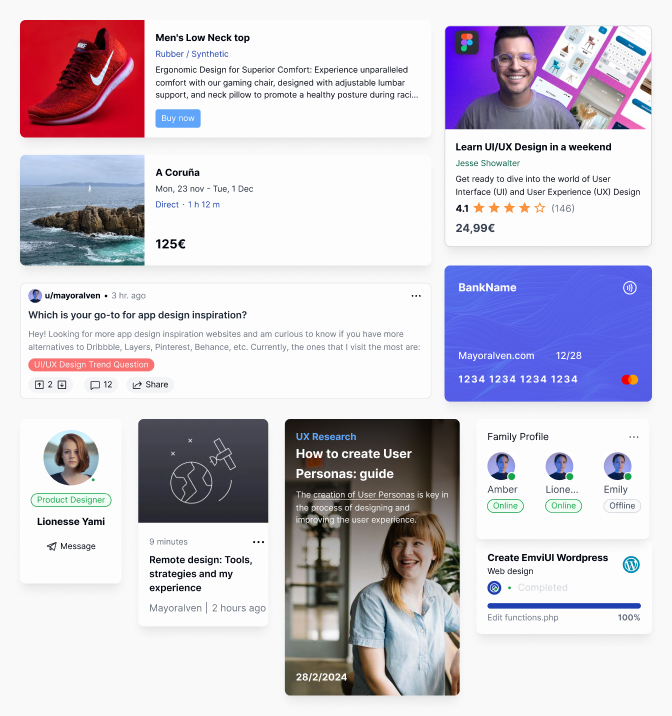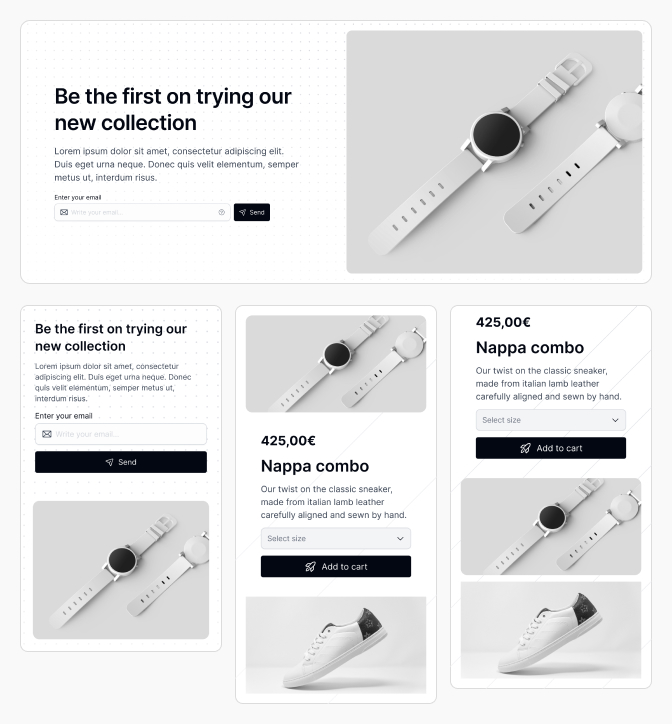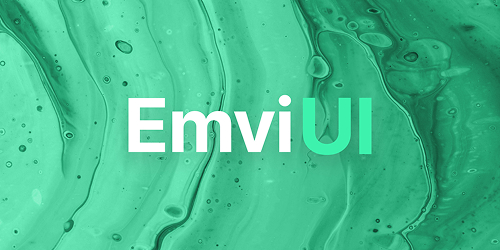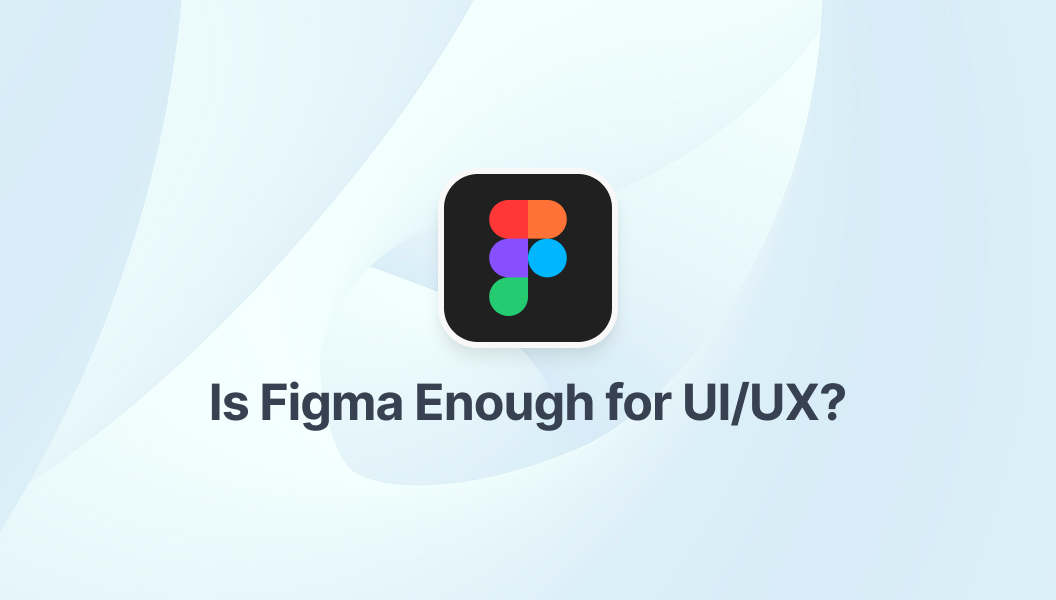Is Figma sufficient for UI/UX design?
Yes - for most designers and projects, Figma is completely sufficient for UI/UX work. It provides all the tools you need to design, prototype, and hand off to developers in one platform. It covers the full design process:
- Wireframing - Quickly create low-fidelity layouts to test structure and flow.
- UI design - Build polished, high-fidelity screens using reusable components.
- Prototyping - Link screens with interactive flows to simulate real user journeys.
- Collaboration - Invite clients, developers, and team members to comment in real-time.
However, to go beyond "sufficient" and achieve world-class efficiency, many designers integrate EmviUI, a TailwindCSS-based UI kit and design system, into Figma. It adds 10,000+ component variants and 100+ prebuilt screens so you can skip repetitive design work.

Is Figma enough to get a job?
Absolutely. Many companies - from startups to large tech firms - list Figma as a primary skill in UI/UX job descriptions. If you're fluent in Figma and can show a strong portfolio, you can pursue roles such as:
- UI Designer
- UX Designer
- Product Designer
- Design System Manager
But here's the secret: Employers love candidates who can design faster and more consistently. That's why showing you can work with ready-made design systems like EmviUI's free kit can help you stand out. It demonstrates you understand scalable design and component-based workflows, which is a must for enterprise projects.
Can I learn Figma in 10 days?
Yes, you can learn the basics of Figma in under two weeks if you dedicate daily practice. Your first 10 days could look like this:
| Day | Focus |
|---|---|
| 1-2 | Understand the Figma interface, frames, and shapes |
| 3-4 | Learn text, colors, and styles |
| 5-6 | Create and reuse components |
| 7 | Experiment with prototyping and interactions |
| 8-9 | Work on a small real project |
| 10 | Import and customize a UI kit like EmviUI |
While you can grasp the basics quickly, mastery takes time. Complex design systems, responsive layouts, and token-based styling are skills you'll develop over months of real-world use.

Which platform is best for UI/UX design?
Figma dominates in 2025 for several reasons:
- It's platform-independent - works on Mac, Windows, Linux, and in your browser.
- Free to start, with generous features for individuals.
- Unmatched real-time collaboration without version conflicts.
- Massive Figma Community with free templates and plugins.
Other tools like Adobe XD or Sketch have strengths, but their ecosystems are smaller. Combined with EmviUI's Tailwind-based components, Figma becomes not just the best platform for UI/UX - but a complete design-to-development solution.
What is the 6-3-1 rule in UI design?
The 6-3-1 rule is a creative process that ensures you explore multiple design possibilities before settling on a final solution:
- 6 ideas - Sketch or mock up six different concepts for a design problem.
- 3 variations - Select the three strongest concepts and refine them.
- 1 final design - Choose the winning direction and polish it for production.
Figma is perfect for this method because you can duplicate frames instantly, keep all variations in one file, and compare them side-by-side. If you're using EmviUI, you can pull different component styles quickly to experiment with visual diversity without starting from scratch.
Can I teach myself Figma?
Yes - many successful designers are self-taught in Figma. The key is combining learning resources with practical projects:
- Follow tutorials from Figma's help center and YouTube.
- Reverse-engineer EmviUI components to understand professional setups.
- Join online communities and design challenges.
- Recreate interfaces from popular apps as practice.
Self-teaching works best when you focus on creating, not just consuming tutorials. Start small, but aim to build complete UI flows to gain confidence.
Frequently Asked Questions (FAQs)
Is Figma enough for UI/UX design?
Yes, Figma covers wireframing, UI creation, prototyping, and developer handoff. Many professional designers use it as their sole design tool.
Do I need other tools besides Figma?
Not necessarily. Figma is all-in-one, but pairing it with a ready-made design system like EmviUI can boost efficiency and consistency.
Is Figma good for beginners?
Yes. Its drag-and-drop interface, collaborative features, and huge library of community resources make it perfect for newcomers.
How long does it take to master Figma?
Basics can be learned in 1-2 weeks, but mastery - especially for large-scale design systems - can take several months of consistent work.
Can I design apps only in Figma?
Yes, Figma supports mobile app design from wireframes to final UI. Developers can export assets and inspect specs directly from your Figma files.
Is Figma better than Adobe XD?
Figma offers real-time collaboration, is browser-based, and has a larger community library, which many designers prefer over Adobe XD.
Does Figma work offline?
Yes, with the desktop app you can work offline. Your changes sync automatically once you reconnect.
Do companies hire designers who only use Figma?
Yes. Many design roles list Figma as a key skill, especially in remote-friendly tech companies.


